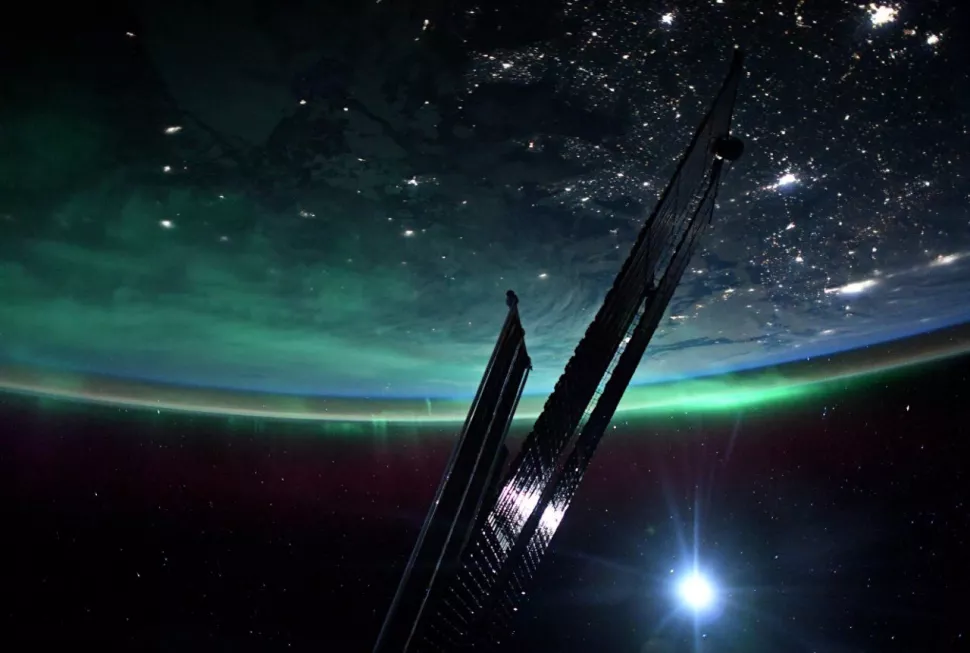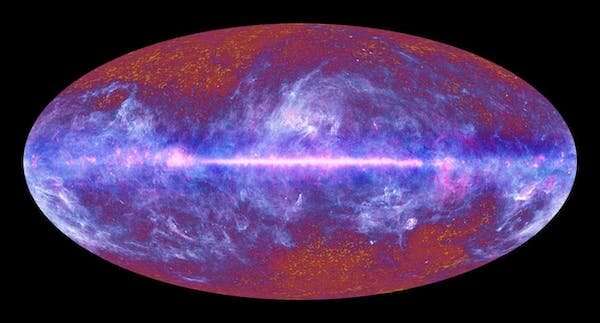Why is the sky dark at night?
- June 19, 2023
- 0
As dawn broke over Bremen, Germany, on May 7, 1823, Heinrich Olbers completed the article that left his name in history. After the death of his wife and
As dawn broke over Bremen, Germany, on May 7, 1823, Heinrich Olbers completed the article that left his name in history. After the death of his wife and

As dawn broke over Bremen, Germany, on May 7, 1823, Heinrich Olbers completed the article that left his name in history. After the death of his wife and daughter, Dr. Olbers recently quit his job as an ophthalmologist and devoted himself to his nocturnal passions: the stars, the moon, meteors and comets. Like many of his peers, Olbers studied astronomy. He built a solid reputation in the academic world and spent long nights watching the sky from his second-floor observatory.
That morning, Olbers came to a surprising conclusion: Based on everything known about the universe at the time, the night sky was not supposed to be dark. In fact, the entire sky should have been as bright as the sun. Olbers was not the first to notice this paradox. But today we associate his name with it. The mystery of the darkness of the night sky has echoed through the centuries from Olbers and poet Edgar Allan Poe to today’s 20th century astronomers and space probes.
Like many of his contemporaries, Olbers followed Isaac Newton and René Descartes in believing in the eternity of the universe. If the universe were finite and static, gravity would pull all the stars to a central point. But if the universe went on forever, the gravitational forces would, on average, be balanced in all directions.
However, Olbers realized that this model of the cosmos did not correspond to the observations. Wherever we look at night in a vast universe filled with an infinite number of stars, our gaze must rest on the surface of a star, just as every line of sight in a forest ends in a tree.
This was the problem that Olbers raised in his May 7, 1823 article: The cosmological model of time predicted that every point in the sky should be as bright as the surface of the sun. It shouldn’t be night.
Olbers proposed a solution: light from more distant stars was absorbed by dust or other matter floating in space. British astronomer John Herschel later pointed out that this cannot be true, because anything that absorbs that much light eventually gets hot enough to glow.
When Olbers died on March 2, 1840, at the age of 81, the mystery we know today as the Olber Paradox was unsolved.
Eight years later, on the other side of the Atlantic Ocean, poet and writer Edgar Allan Poe thought he had the answer. On February 3, 1848, he gave a public lecture on his ideas to 60 people at the New York Community Library. Swinging back and forth between metaphysics and science, he argued that the cosmos arose out of a single state of matter (“unity”) that disintegrated and disintegrated under the influence of repulsive forces.
This meant that the universe was a finite sphere of matter. If the finite universe is filled with a small enough number of stars, we cannot see stars in every direction we look. The night may still be dark.
Even assuming the universe is infinite, if it started at some point in the past, the time it takes for light to reach us limits the size of the universe we can see. This travel time will create a horizon beyond which distant stars cannot be reached.
Poe’s audience at the New York Community Library did not give him the enthusiastic reception he had hoped for. Later that year he published his theories in the prose poem Eureka, which was not widely circulated. He died the following year, on October 7, 1849, at the age of 40. More than a century passed before scientists confirmed their intuition about the mystery of the dark night sky.

During the first half of the 20th century, many new universe theories were developed based on Einstein’s general theory of relativity, which explains gravity, space, and time in new ways. In the second half of the century, these cosmological theories began to be tested with the help of observations.
In 1963, British astronomer Peter Scheuer argued that cosmology was based only on “two and a half truths”:
2. and 2.5. Powerful debates over the interpretation of phenomena swamped the scientific community in the 1950s and 1960s. Was the universe really at rest, or did it begin with a big bang: the Big Bang? Fans on both sides relented, but had to explain the darkness of the night sky.
British cosmologist Edward Harrison resolved the conflict in 1964. He showed that the main factor determining the brightness of the night sky is the finite age of the stars. The number of stars in the observable universe is extremely large, but limited. Spread over a huge volume, each lit for a limited time, this limited edition makes the darkness manifest among the stars.
Later, Harrison realized that this solution was proposed not only by Edgar Allan Poe, but also by the English physicist Lord Kelvin in 1901. Observations in the 1980s confirmed the solution proposed by Poe, Calvin, and Harrison. Olber’s paradox is finally over.
Or maybe not at all. From another angle, the paradox has a different solution: the night sky isn’t all that dark. After the discovery of the expansion of the universe in the late 1920s, scientists realized that the universe could have been extremely compact, dense, and hot to begin with. This is the “hot big bang” model we have today.
One of the main predictions of this model is the existence of “fossil light” emitted at the dawn of space. This fossil light can be observed today, but not with the naked eye as the expanding universe will shift it to longer wavelengths. This radiation, the cosmic microwave background, was discovered in 1964. Now measured with extraordinary precision, cosmic background radiation is the most abundant light in the universe.
We now know that space is also illuminated by a much weaker background light, which galaxies produce as they form and evolve. This light is called the cosmic ultraviolet, optical and infrared background. So we can also respond to Olber’s paradox by saying that the sky is not dark, but that everything that existed in the finite period of the universe’s existence flickered faintly with faint residual radiation.
In 2023, the Olber paradox has turned into a rich field of research. In our own work, we make increasingly precise measurements of the brightness of the night sky and model the stars of space with the help of supercomputers. We can now determine the number of stars in the sky with great accuracy.
Yet the mysteries remain. Last year, the New Horizons space probe orbiting Pluto and away from the dust of the inner solar system found the sky twice as bright as we expected. And so the problem of the darkness of the sky continues to live beyond the ages and cultures.
Source: Port Altele
As an experienced journalist and author, Mary has been reporting on the latest news and trends for over 5 years. With a passion for uncovering the stories behind the headlines, Mary has earned a reputation as a trusted voice in the world of journalism. Her writing style is insightful, engaging and thought-provoking, as she takes a deep dive into the most pressing issues of our time.